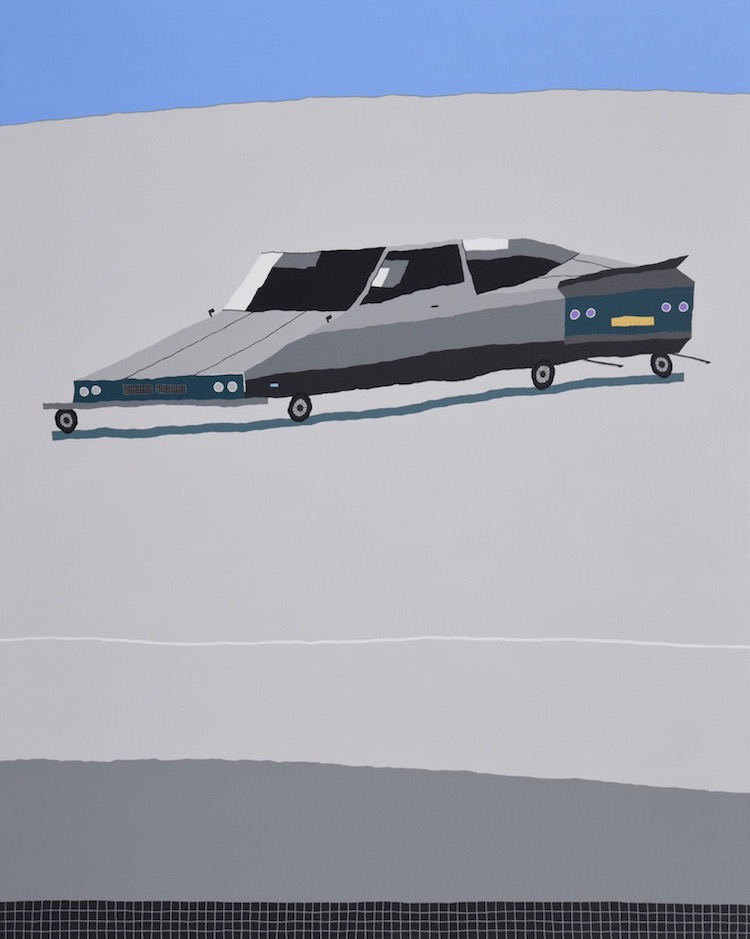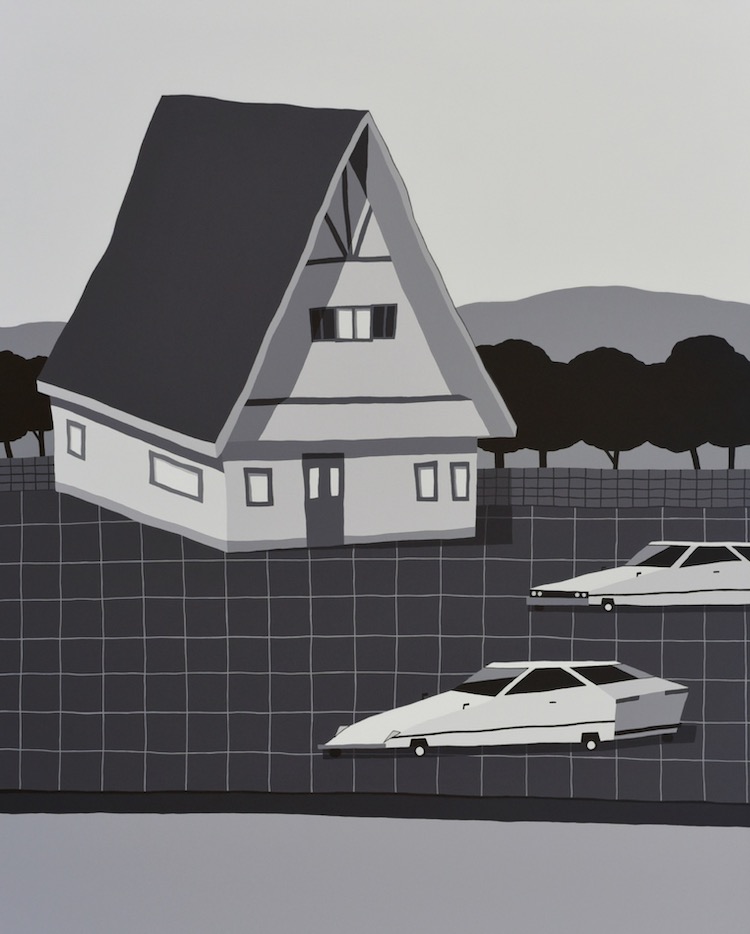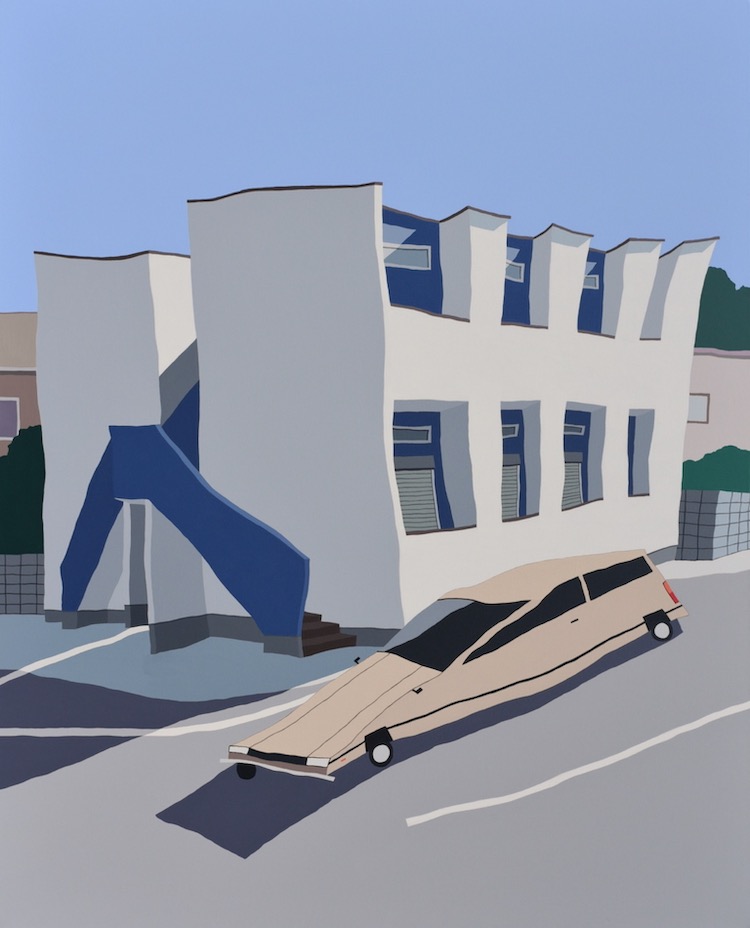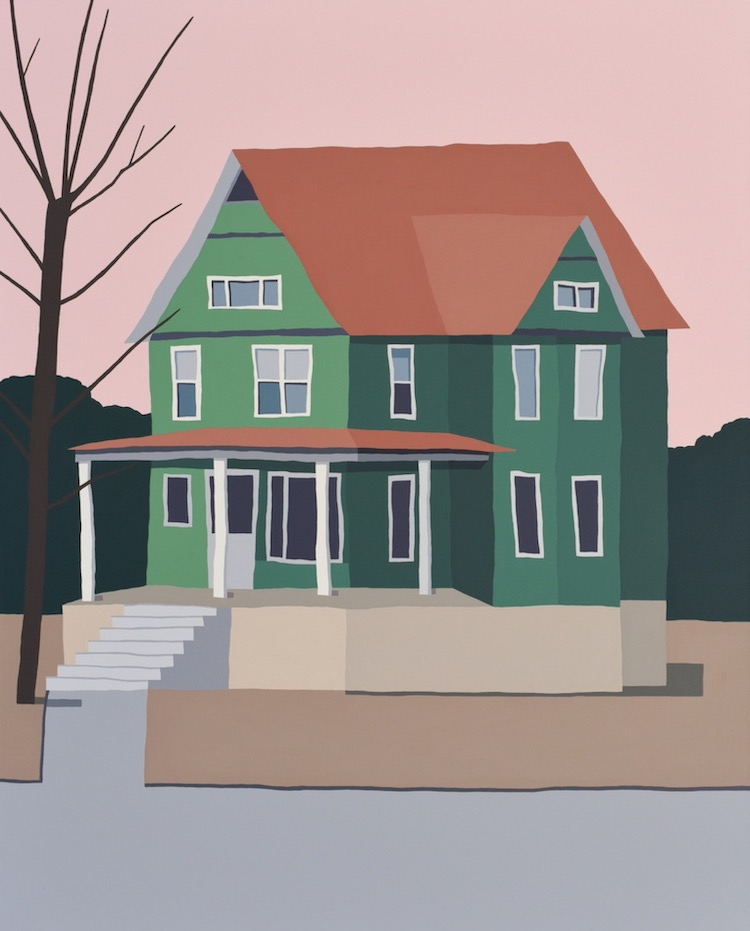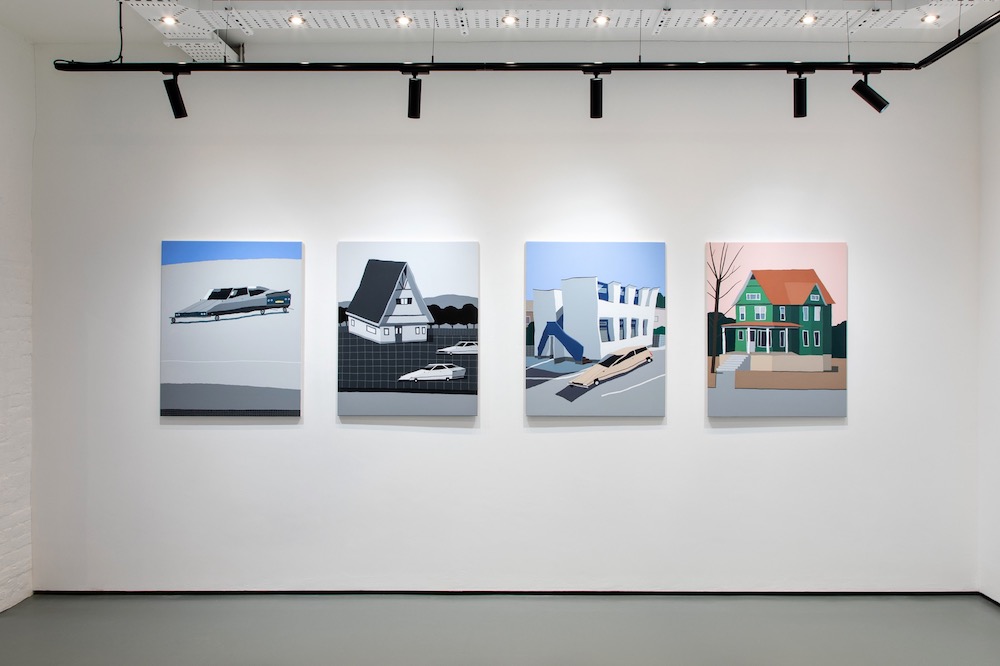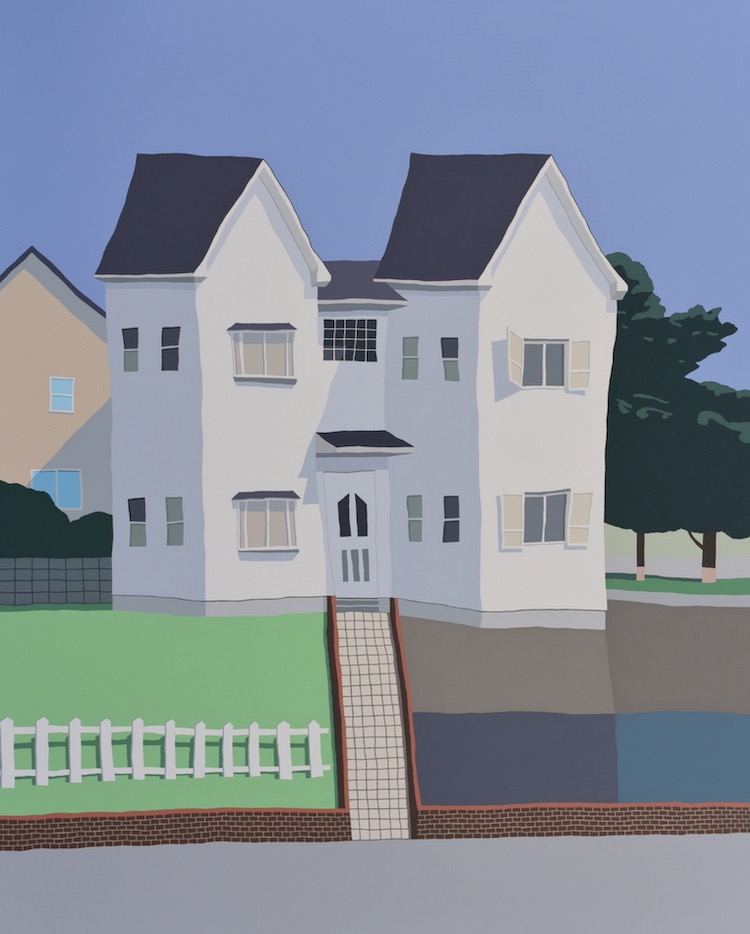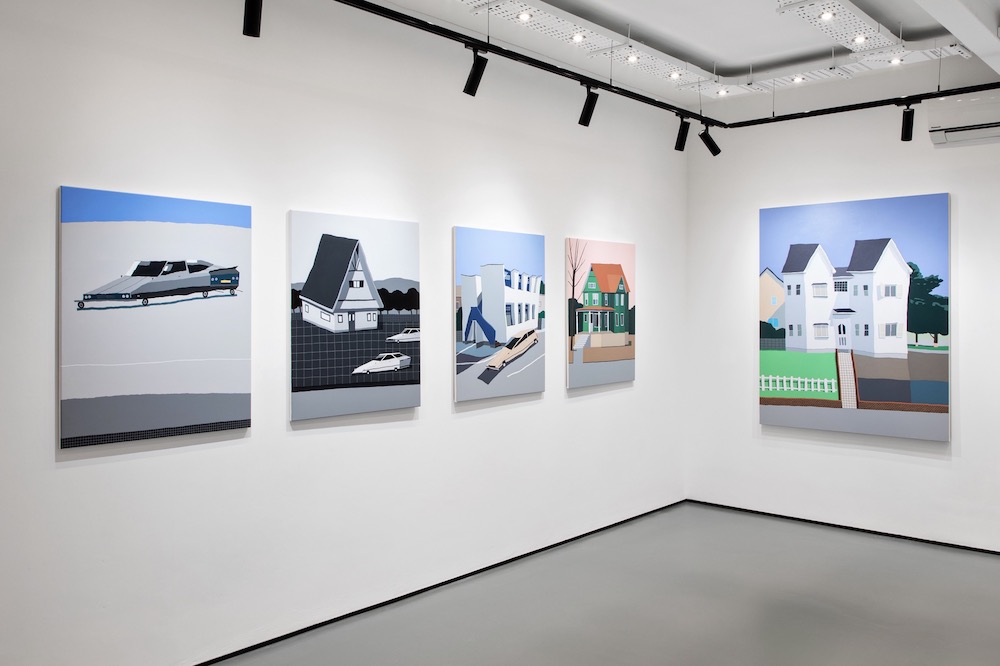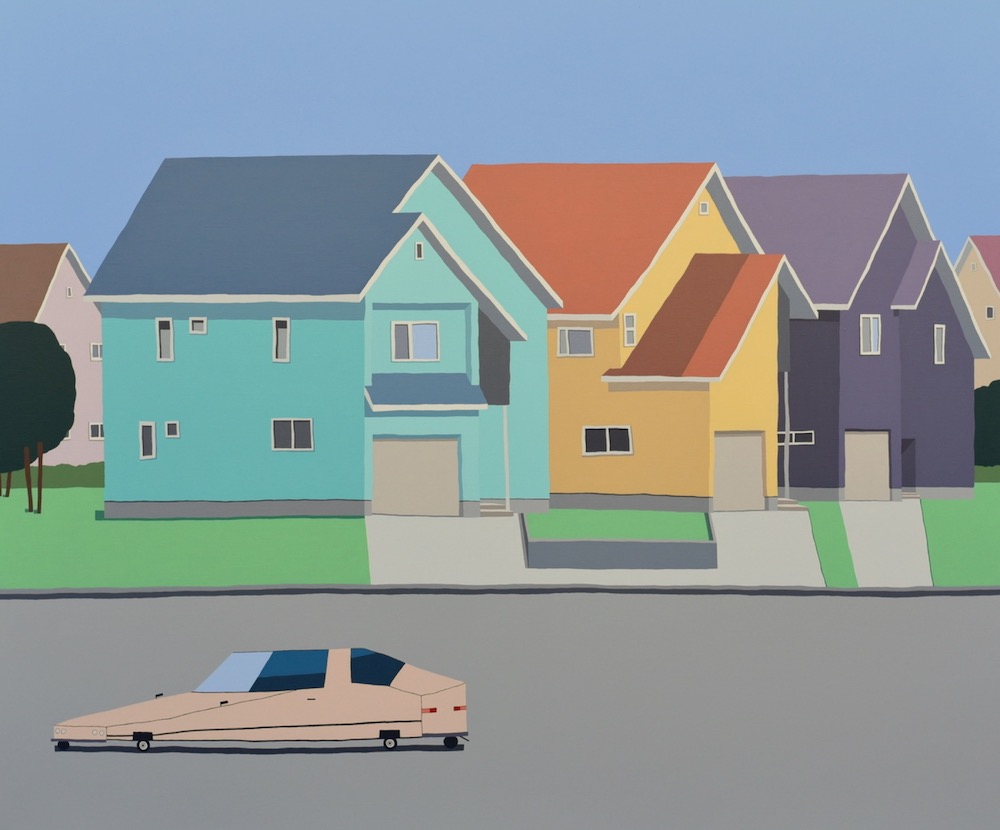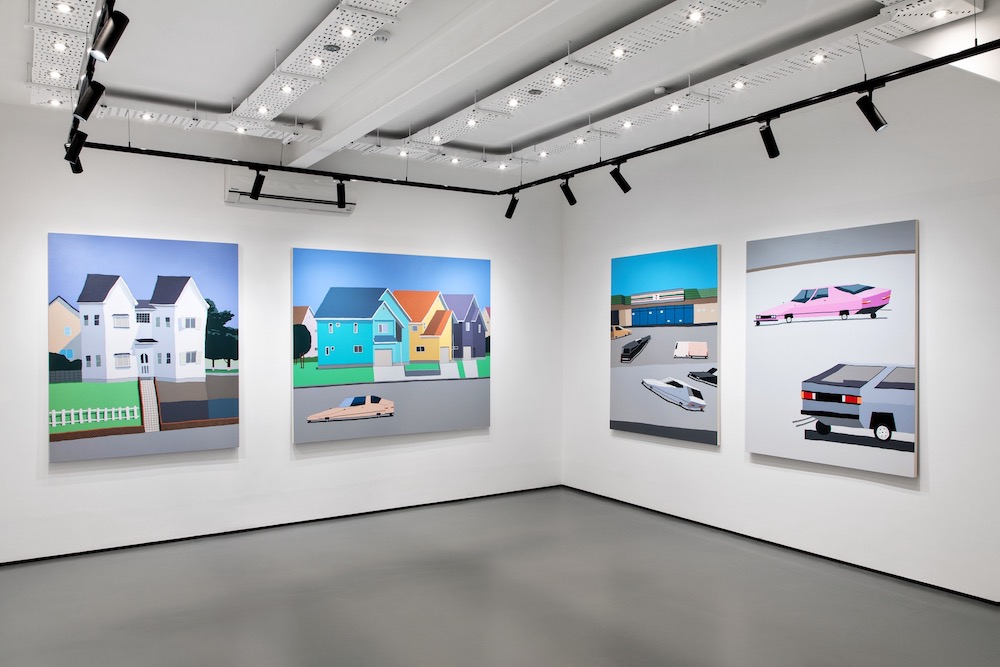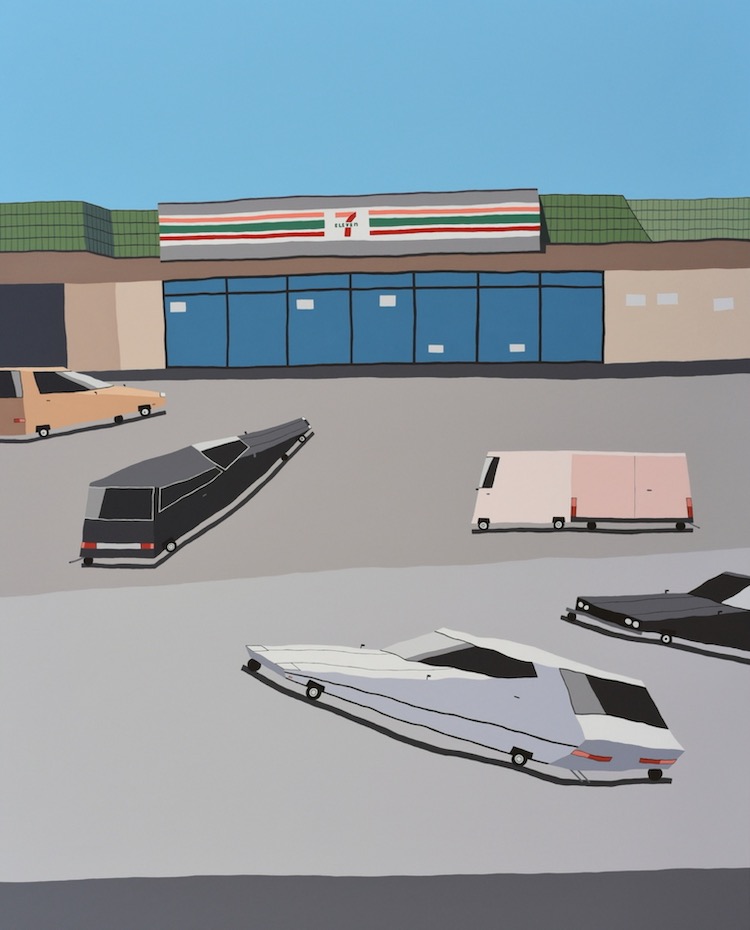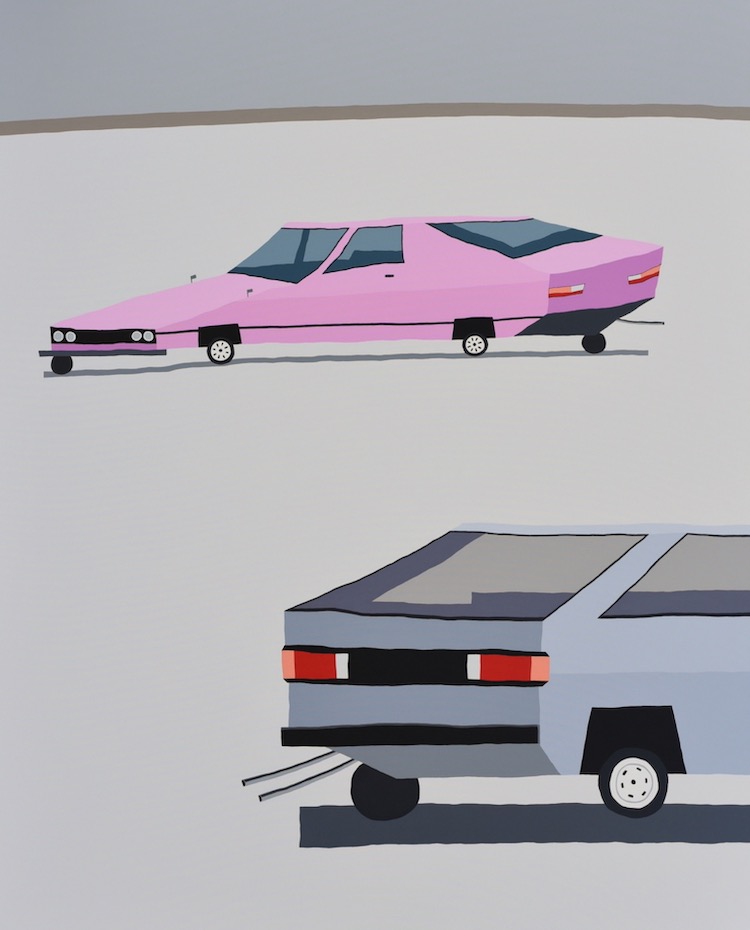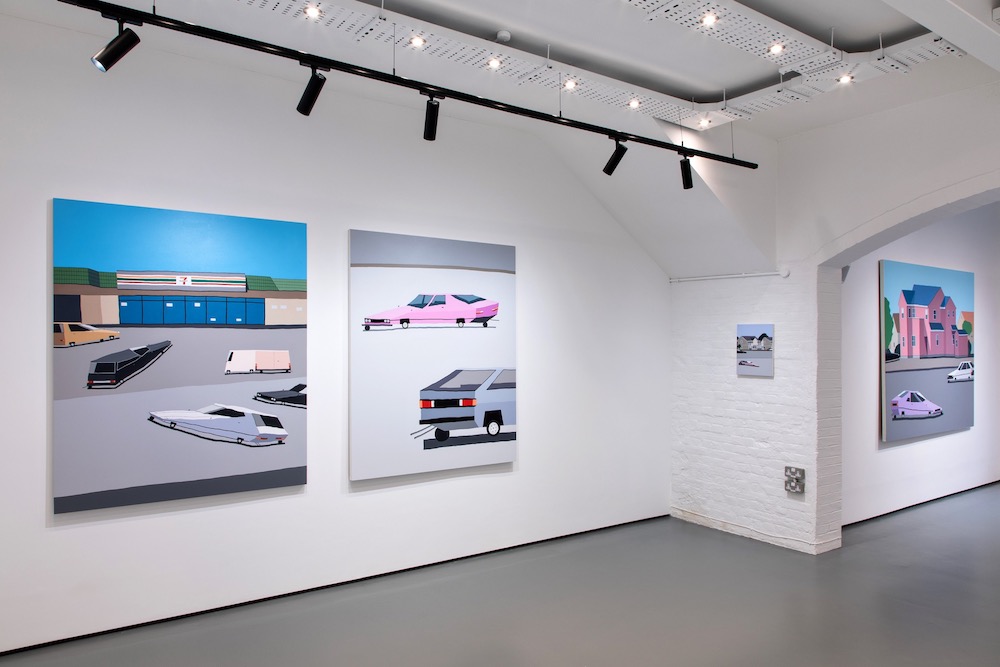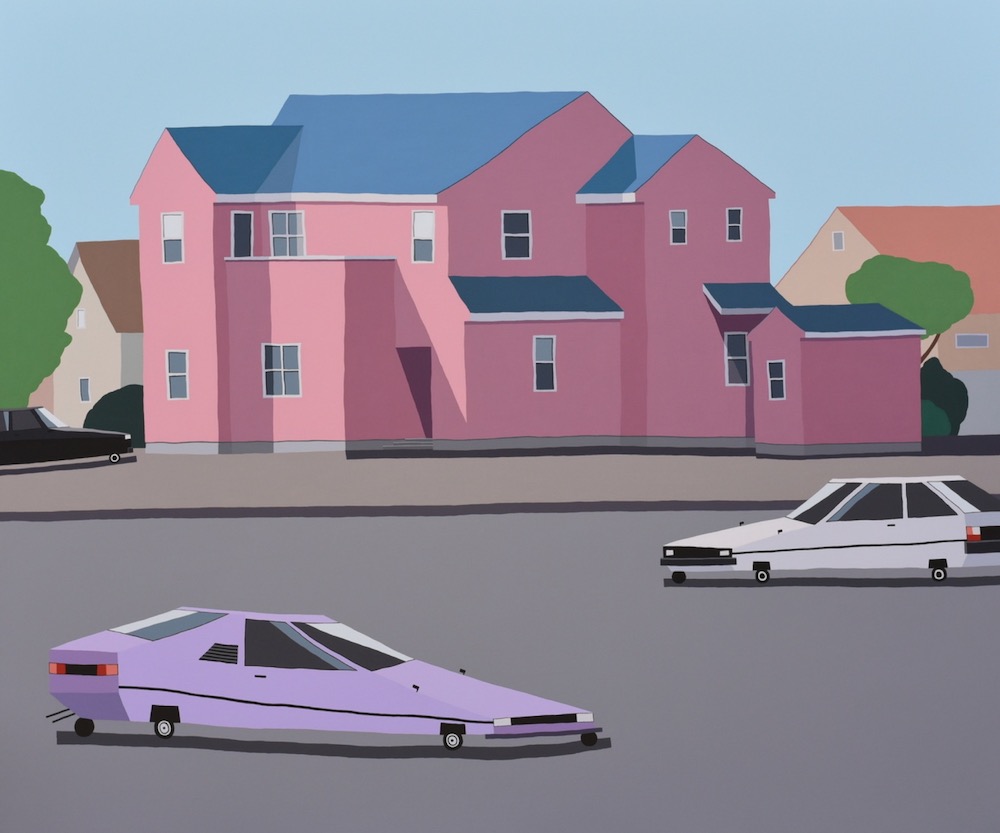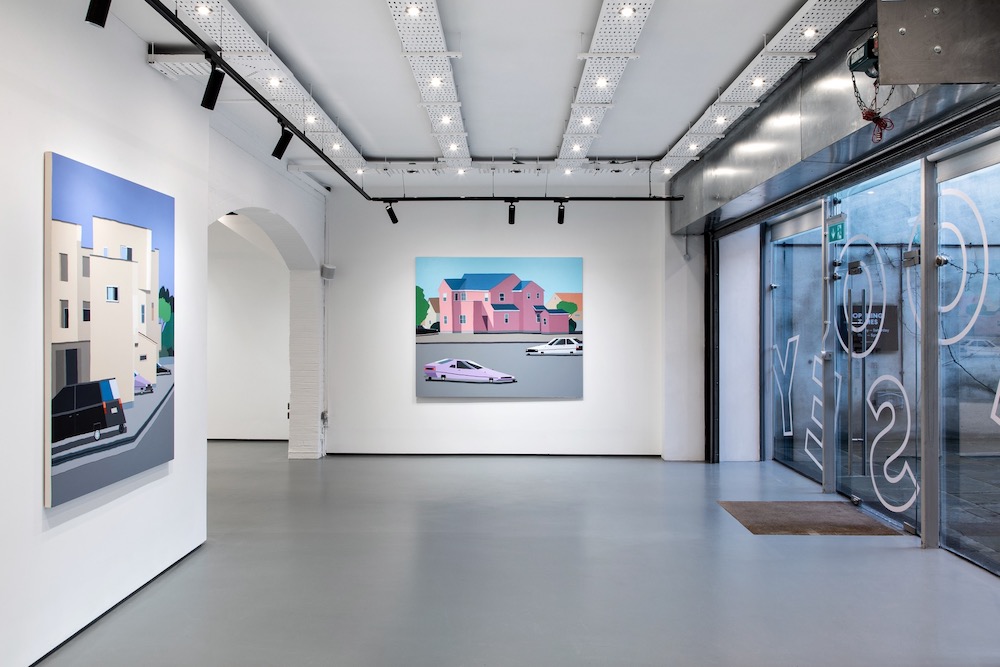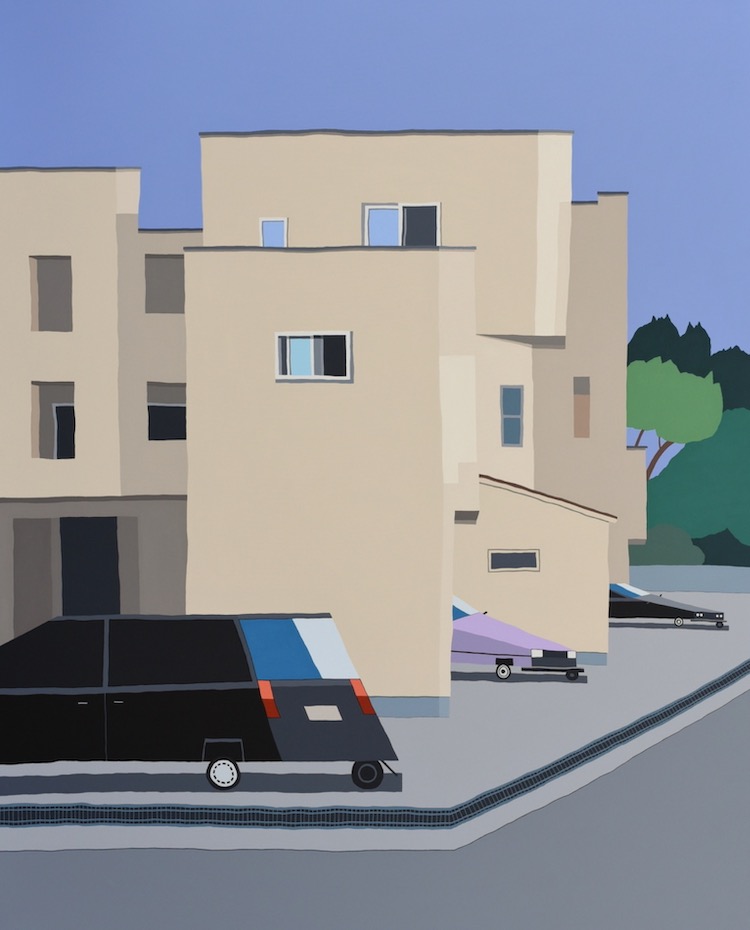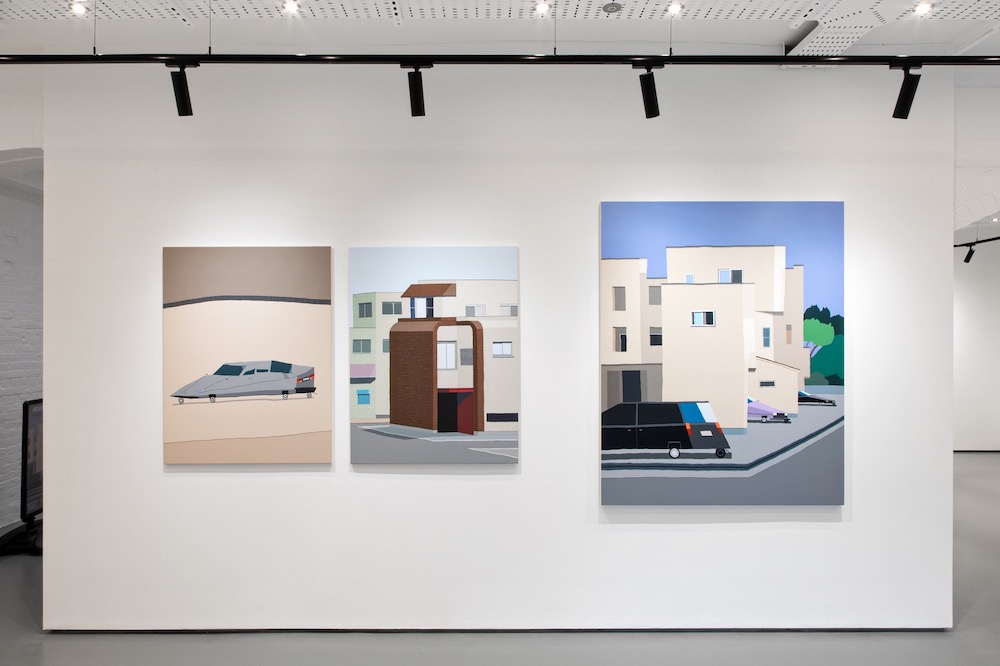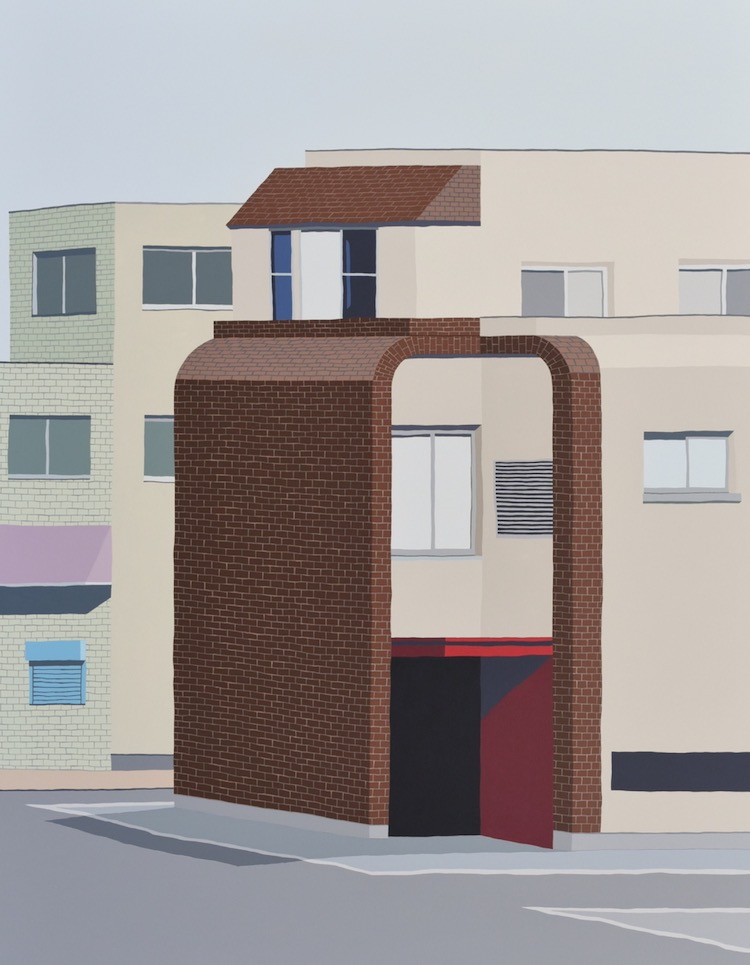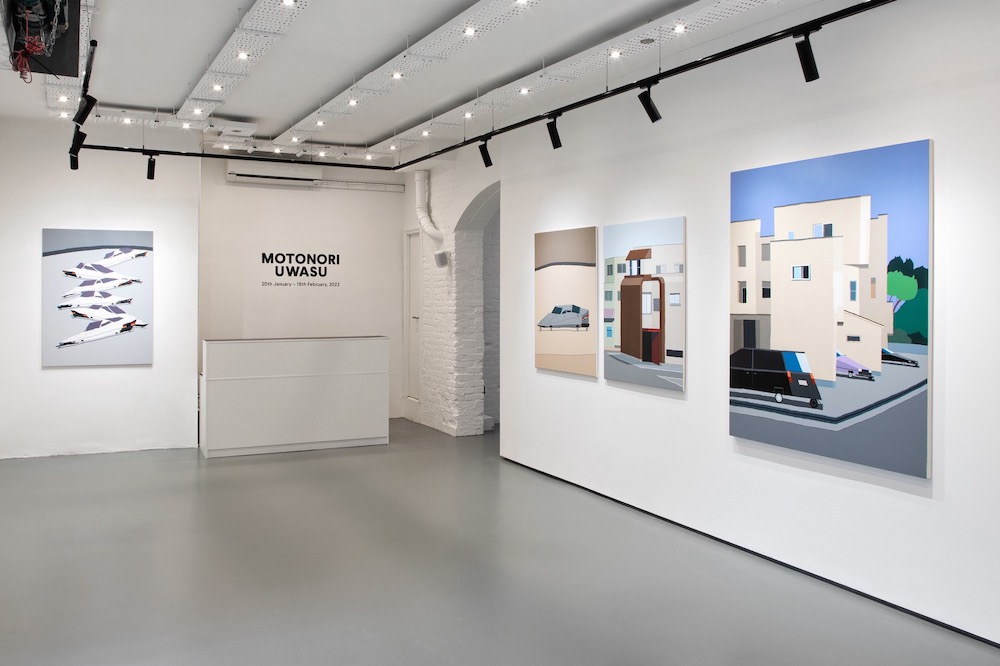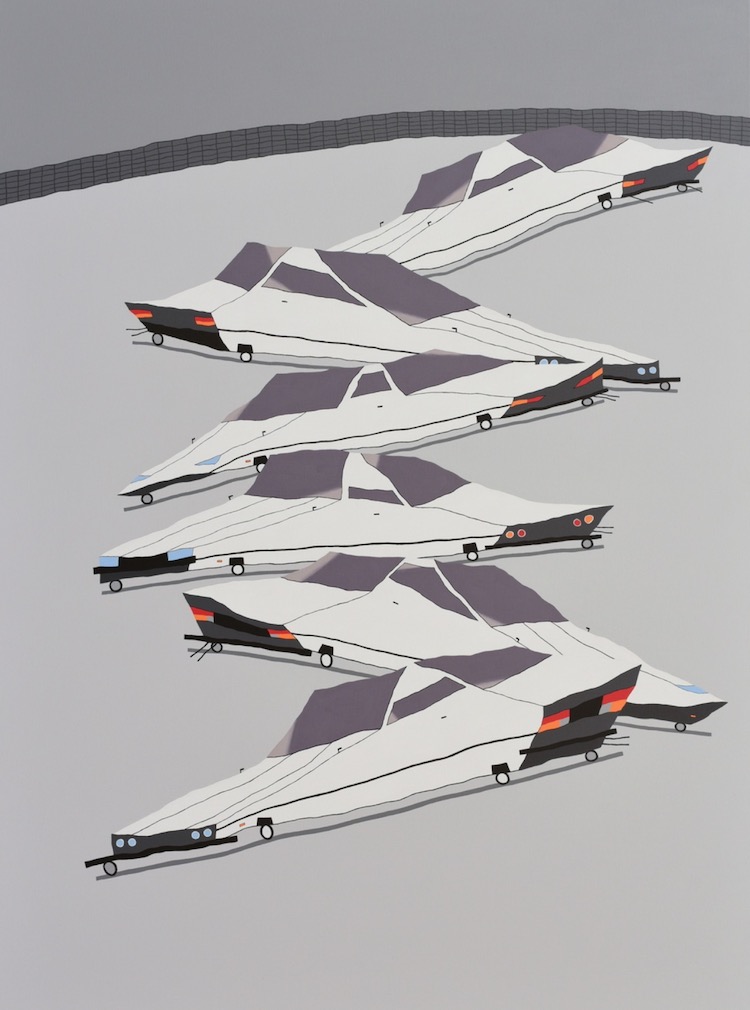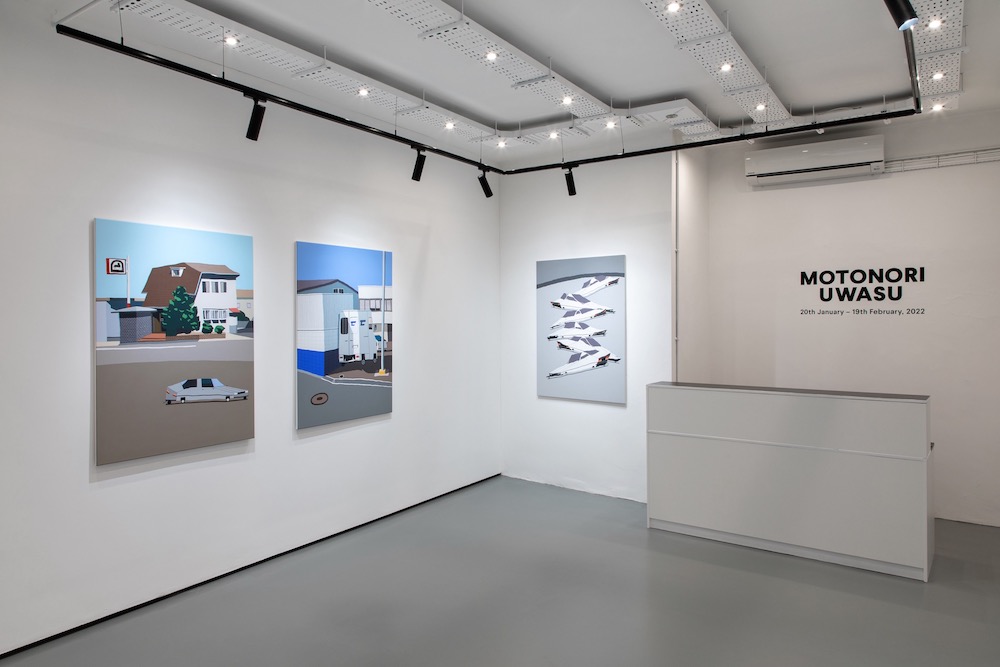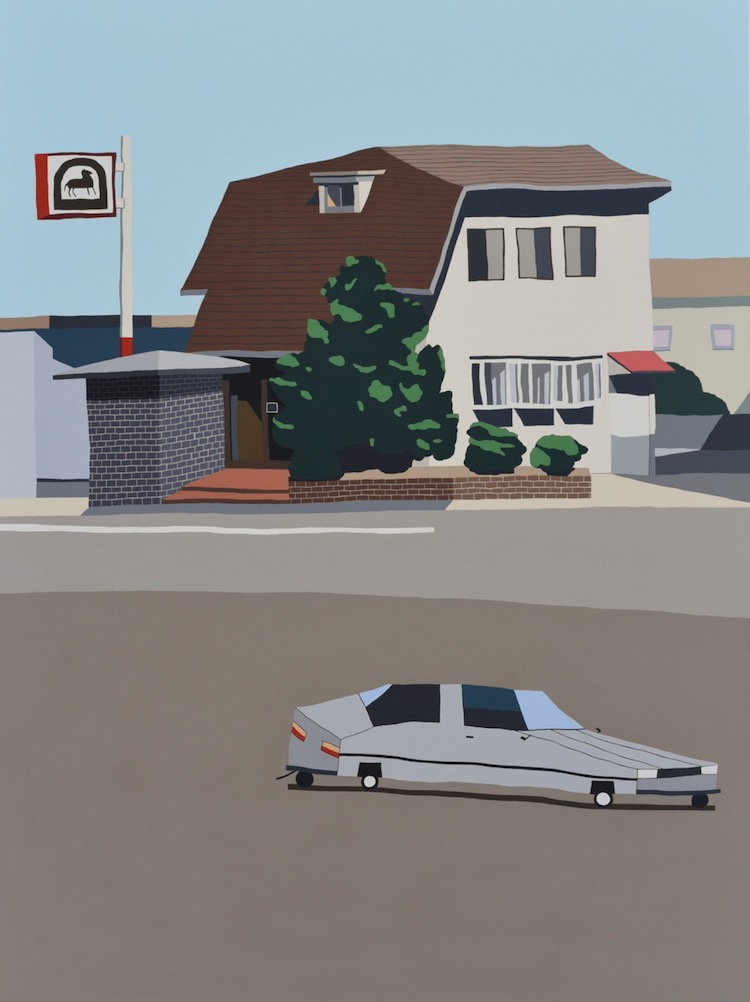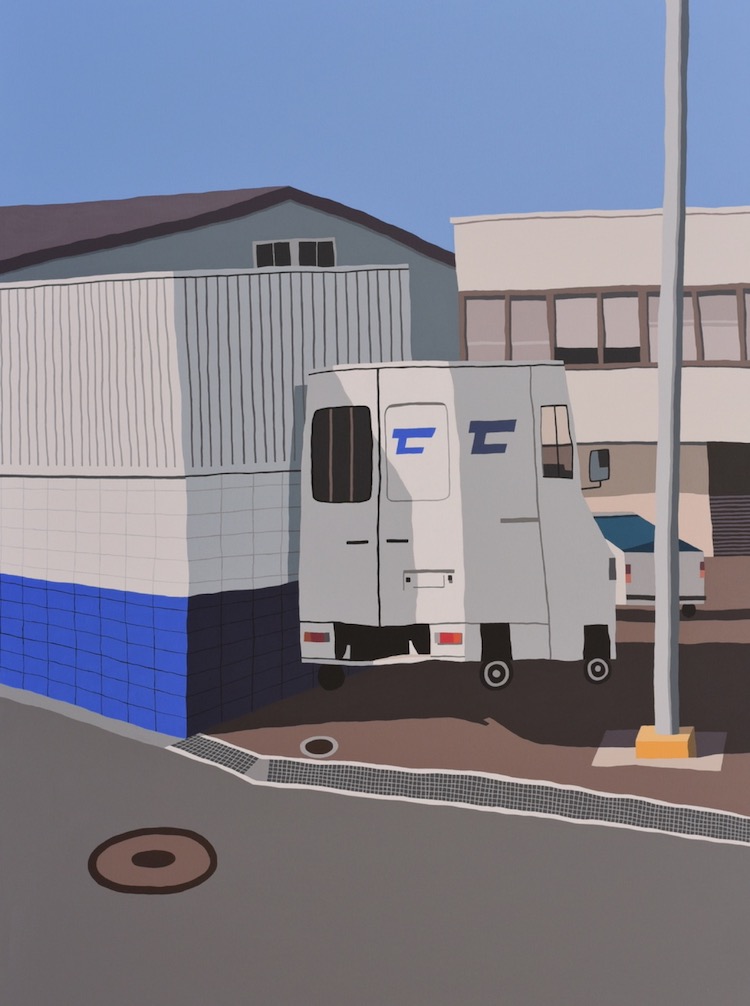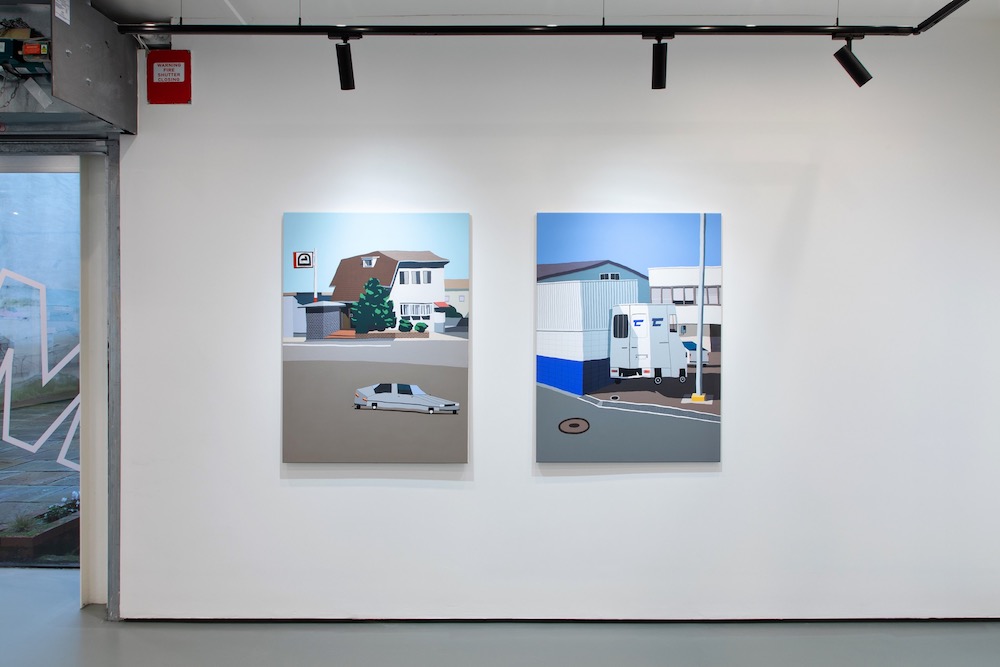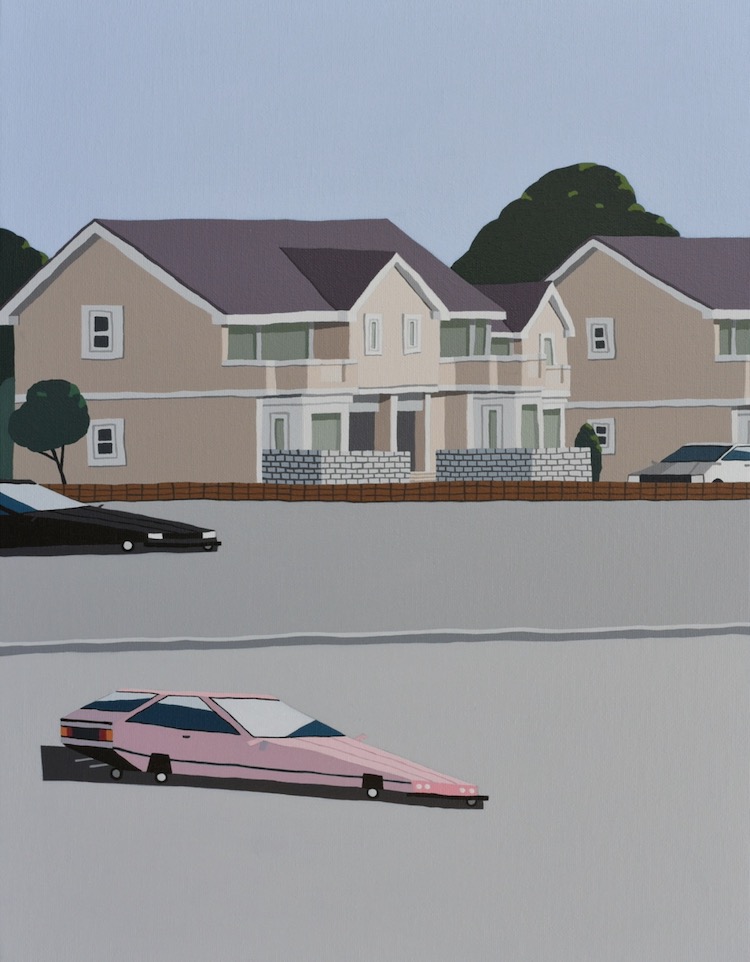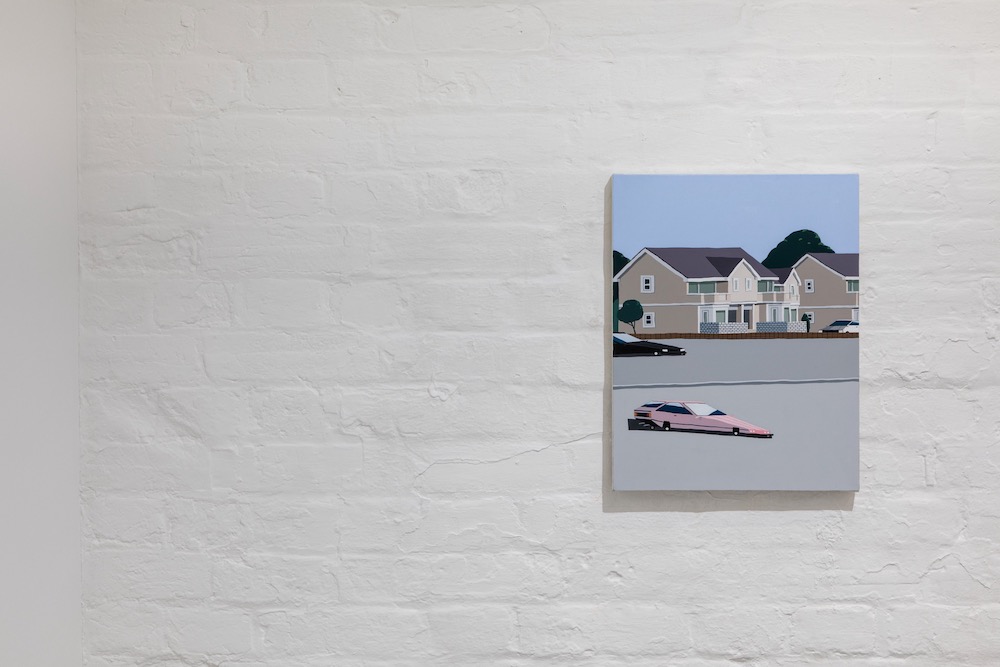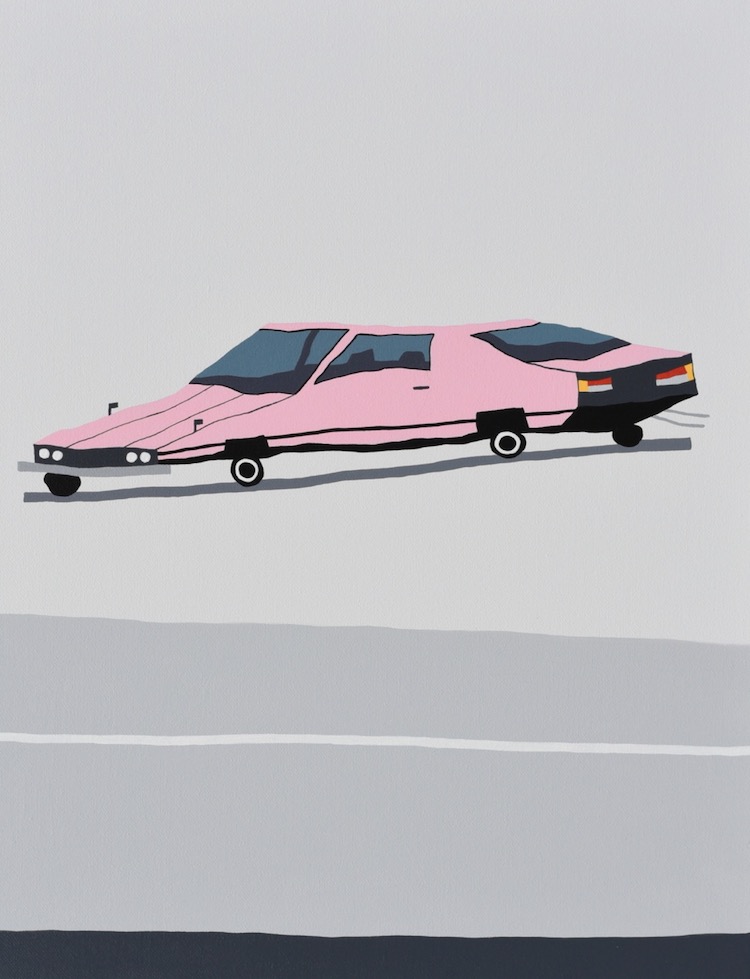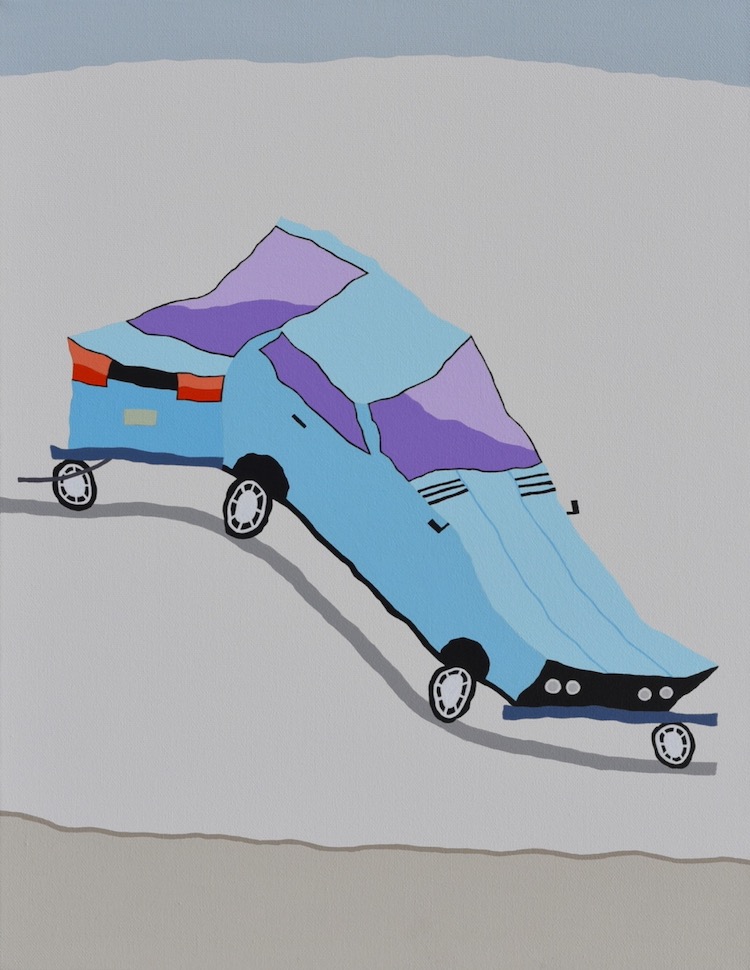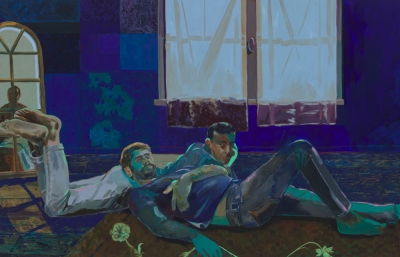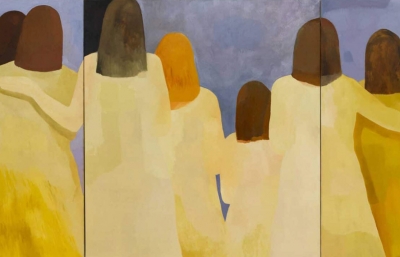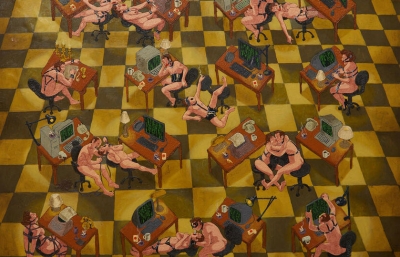We always enjoyed seeing artists develop new ways to portray the mundane scenes in a way that gives them a new life. Whether turning them into emotive, poetic scenes, metaphors for universal subjects or just playfully rearranging the reality, such approaches are easy to be drawn to and connect. And Motonori Uwasu's UK debut House and Car, which is on view at Moosey gallery in Norwich until February 19th, is comprising a series of works in which common suburban vistas are transformed into quiet, dreamy settings.
Through skewed perspectives, impossible scales, flattening color shifts, and general looseness, the Osaka-based artist recreates the everyday scenery into an unnatural setting. Unbothered with the technical or factual exactness of his visuals, Uwasu is more interested in the way our memory tends to change, alternate, and bastardize the raw reality. And for this reason, he is choosing some of the most familiar, universal, and archetypal imagery out there. "I don't particularly like cars and houses, but they are familiar to me and I wanted to use motifs that many people are familiar with," the artist told Juxtapoz about the reasoning behind his exceptionally limited motif selection. Working from a memory of a sight he might've come across in life or remotely, he is hoping to stimulate the vague and inactive part of viewers' memory with his renditions. "The landscape I draw is not a perfect reproduction of the actual landscape, but an inorganic and unrealistic landscape. Like a toy," he told us about what these scenes are meant to represent, suggesting a connection between his creative process and play.
And although playful and fun, there is a subdued sense of nostalgia permeating these unknown locations. "A slight distortion of perspective and depth will make the painting world unnatural. However, the unnaturalness can have a strange sense of reality, similar to a dream," Uwasu told us, to some extent explaining the whimsical vibe of his waning suburban snapshots. The quietness and remoteness of these scenes are underlined both with the absence of any characters and the exceptionally carefree approach to depicting his motifs. Painted in a clean, graphic way, but with a loose approach to any factual quality, the seemingly flat imagery, in reality, has a lot of oddly laid out depth and volume. Allowing for the motifs to bend, shrink, expand, or deconstruct in most impossible ways, the imagery is regularly enwrapped with a believable atmosphere through the depiction of light and the use of evocative colors. "The exaggerated colors might be there because I want to get rid of my taste and feelings," Uwasu told us about his eccentric, cartoon-like color choices that are both alternating the scenery as well as imbuing it with a somewhat nostalgic, sweetly melancholic atmosphere. - Sasha Bogojev

